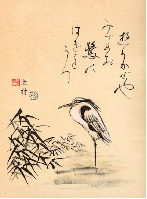
Interdisciplinary Lesson Plan: Haiku Art!
Teacher: Ms. Grace Ahn
Grade: 4th Grade (can be adapted)
Brief History:
Haiku is a form of Japanese poetry in three metrical phrases of 5, 7, 5 respectively. Haiku’s are traditionally about nature and seasons, however are not limited to just that subject matter. In Japanese, Haiku’s are usually printed in a single vertical line, while haikus in English usually appear in three lines to emphasize the metrical count. Haiga is a traditional Japanese art form where one uses both an image and their haiku to convey their poem.
Standards:
PA 1.3 Reading analyzing and interpreting literature..
PA 1.4 Types of writing..
PA 7.1 Basic geography literacy
9.1 E Themes in Art Forms
9.1 H Historical and Cultural Production
9.2 A Context of Works in Arts
9.2 G Geographical Regions in the Arts
9.2 K Traditions within works in the arts
9.3 Critical response
9.4 B Aesthetic interpretation
9.4 D Aesthetic response- Artistic Choices
Goal:
Through understanding haiku’s and haiga students will create a work of art that visually represent their own written haiku poem.
Objectives:
Students will learn about haiku poetry
Students will have the experience of writing a haiku
Students will understand and can define Haiga
Students will create a work of art to enhance their haiku
Resources:
Examples of haiku poems- Both in Japanese and English
Examples of Haiga art- both Japanese and English
A map of Japan
Materials:
Pencil and paper
Pens
Markers
Construction paper
Scissors
Paint and brushes
Teacher preparation:
Teacher should have visual and written examples of haikus and haiga’s for students for refer to. All materials should be ready and organized for students to use. Exemplar of lesson product should also be made.
Introduction:
Begin class by giving a brief overview of haikus and haigas. Visual examples should be show to excite students as well as have them internalize the information better. Explain how haikus are metrical and involve a count of 5, 7 5 syllables. Go around the room and have students read examples of haikus.
Directions:
- Have students write their own haiku
- Once they have written their haiku, have students think about how they would visually represent their poem.
- Students should then use materials to create a composition that integrates both the haiku and their image.
- Students may create a mixed media piece using various materials or they have the option of using one specific technique (i.e painting, drawing etc.)
- Make sure students have their haiku written on their image
- Once everyone has completed students will present and read their haiku
Extension:
For students who have completed early, have them write a haiku that is the opposite of their original theme.
Time allocation:
Introduction- 5 min
Production- 30 min
Critique- 7 min
Clean up- 3 min
Safety concerns:
n/a
Bibliography:
http://en.wikipedia.org/wiki/Haiku
http://www.ahapoetry.com/HAIKU.HTM
http://www.insite.com.br/rodrigo/poet/haiku.html
Click here to see examples of a 3rd grade class haiku art project!

No comments:
Post a Comment